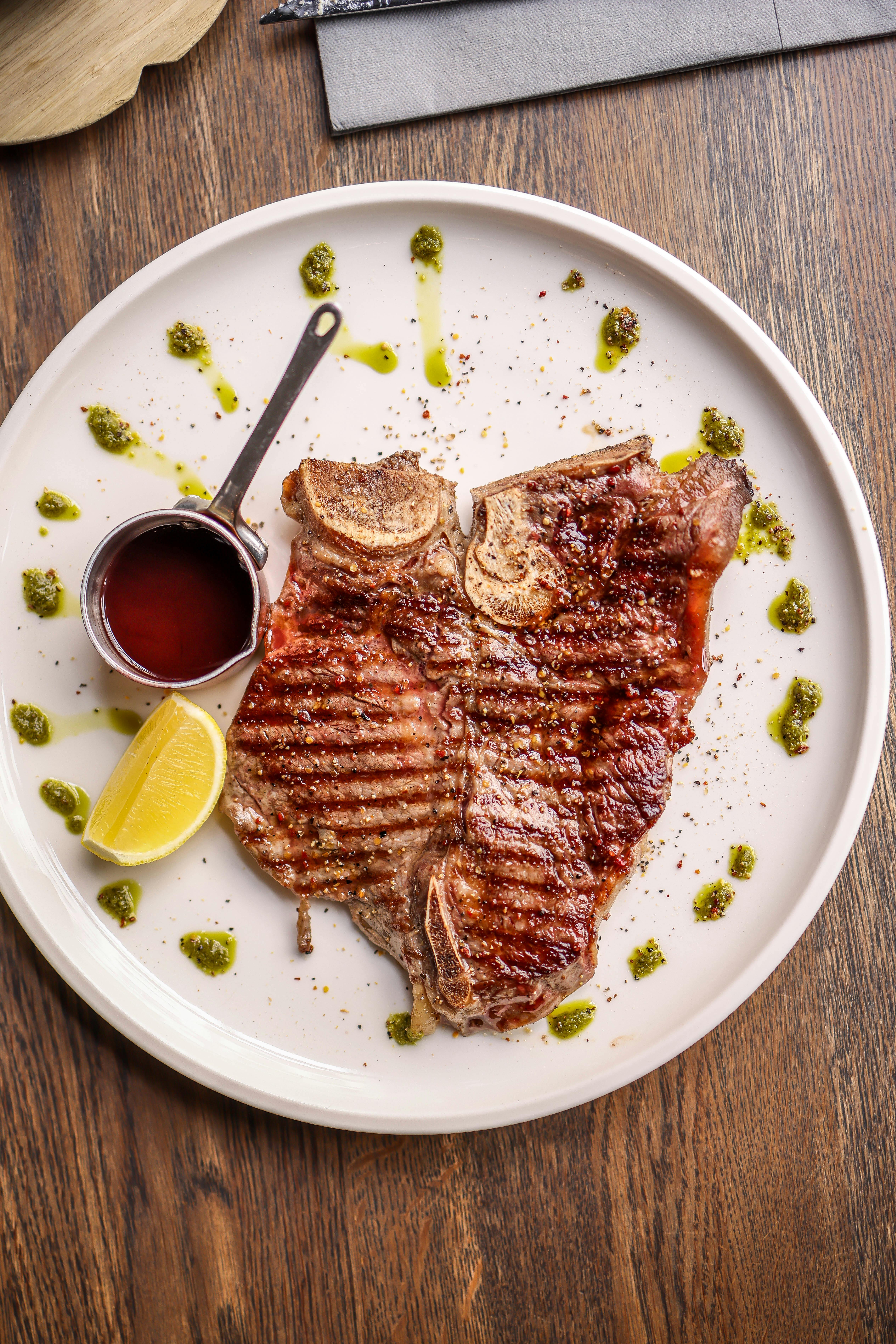Carnivore Diet vs Keto Diet: The Best 5 Options for 2025


Understanding the Carnivore Diet and Keto Diet
The **carnivore diet** and **keto diet** are two popular low-carb eating strategies that emphasize fat intake for energy, albeit in distinct ways. The key difference lies in their food choices; while the carnivore diet restricts intake to animal products, the keto diet allows for a broader array of vegetables and healthy fats. Both diets aim to promote **weight loss**, improve energy levels, and enhance mental clarity, but they present very different dietary options, restrictions, and health impacts. Exploring the **health benefits** of each diet can help individuals determine which aligns better with their personal goals and **lifestyle changes**.
Key Principles of the Carnivore Diet
The **carnivore diet** is also known as a "primal diet," consisting solely of animal products — meat, fish, eggs, and limited dairy products. This **high-protein diet** provides an abundance of essential amino acids while restricting carbohydrates to negligible levels. **Fat intake** is significant as well, comprising approximately 70% of total calories. Crucially, this diet supports **fat adaptation**, shifting the body's primary energy source from carbohydrates to fats. This can lead to efficiencies in **metabolism** and improvements in **insulin sensitivity**, making it suitable for people with conditions like insulin resistance or diabetes. Nevertheless, it may present health risks too; individuals need to consider **long-term health** given the lack of nutrient diversity from fruits and vegetables.
Exploring the Keto Diet
The **keto diet**, or ketogenic lifestyle, emphasizes a balanced approach to **macronutrients**. Typically, the diet comprises approximately 70% fats, 25% proteins, and 5% carbohydrates, designed to induce a metabolic state known as **ketosis**. Unlike the carnivore diet, keto includes non-starchy vegetables and some low-glycemic fruits, providing a wider variety of nutrients. The **health benefits of keto** include increased **fat burning**, improved **mental clarity**, enhanced **energy levels**, and possible improvements in **blood sugar levels**. The insights around **meal prep** are crucial here as keto dieters can enjoy a range of recipes to keep meals exciting. However, careful **calorie counting** and understanding ingredient labels are important to prevent hidden sugars from disrupting the diet's goals.
Comparative Nutritional Aspects of Carnivore vs Keto
Both the carnivore and keto diets significantly change the way individuals approach their **eating habits**. With a focus on **nutrient density** and reduced intake of processed foods, these diets promote whole foods, thereby minimizing inflammation in the body. Understanding their nutritional profiles helps individuals devise their meal plans effectively. They should factor in aspects like **meal frequency**, **digestion**, and **food variety**. This section delves deeper into the similarities and differences in their nutrient compositions.
Macro Ratios and Nutrient Diversity
When comparing **macro ratios**, the **carnivore diet** is almost exclusively protein and fat, lacking carbohydrates entirely. In contrast, while the **keto diet** is low-carb, it encourages dietary diversity through fiber-rich, non-starchy vegetables. Nutrient absorption can become an issue for those who strictly follow the carnivore diet due to the lack of vitamins found in plant sources. Therefore, individuals opting for either diet need to consider supplementation or culinary creativity to ensure they meet their daily nutrient needs, particularly for vitamins and minerals.
Satiety and Hunger Levels
High protein and fat consumption plays a pivotal role in how satisfied individuals feel throughout the day. The carnivore approach often results in **higher satiety** levels due to the sheer volume of protein consumed, which can curb cravings. Conversely, keto dieters experience fullness from both fats and the inclusion of fibrous vegetables, which helps manage hunger levels. Each diet's strategies for **meal timing** and frequency greatly impact long-term **weight management** and overall success.
Health Implications: Pros and Cons of Each Diet
While the carnivore and keto diets offer enticing benefits in terms of weight loss and health optimization, they also have associated risks and downsides. This section elaborates on the potential health risks, cardiovascular concerns, and any other implications they may present over time, ensuring a clear picture of the decisions that dieters are making.
Health Benefits of the Carnivore Diet
The **health benefits of the carnivore diet** may include reduced symptoms in autoimmune diseases, improved **digestion**, and a reputation for speeding up initial weight loss. Some individuals report considerable **mental clarity** and focus as they eliminate carbs entirely from their diet. This elimination can help reduce **inflammatory responses** in some, yet there are prevalent concerns regarding long-term heart health and potential nutrient deficiencies from strict adherence to an animal-only diet. Regular consultations with healthcare providers should be prioritized to address these risks.
Health Benefits of the Keto Diet
True to its name, the **ketogenic lifestyle** helps elevate good cholesterol levels while potentially lowering bad ones. The inclusion of whole foods extends **nutrient diversity**, which offers various health markers that a strict carnivore would miss. Furthermore, the keto diet is often prescribed for patients with chronic diseases like epilepsy or metabolic syndrome and lends itself more to sustainable eating habits in the long term while addressing **blood pressure levels** and reducing **chronic inflammation**.
Practical Tips for Both Diets
Success in either diet often lies in effective planning and meal prep. Appropriate **meal plans**, knowing recipes, and grocery shopping strategies help sustain a nutritional path that supports the individual’s goals. This section gives actionable tips on meal prep, as well as a few meal ideas that can ease the transition or maintenance of either diet.
Meal Prep and Ideas for Carnivore Diet
When planning meals for the **carnivore diet**, think simplicity and efficiency. Meal prep can often include batches of grilled steak, baked fish, and boiled eggs, making high-protein options accessible for daily consumption. For variety, consider including organ meats or fatty cuts of pork, which offer essential nutrients and palate variety. Remind yourself of the importance of **hydration and mindset shifts** for optimal influence when embarking on this journey.
Meal Prep and Ideas for Keto Diet
Keto meal preparation can be diverse and enjoyable, as it supports **eating habits** incorporating a variety of vegetables and healthy fats. Some delicious meal ideas include avocado egg salad, zucchini noodles with cream sauce, and chia seed pudding for breakfast. By mastering simple **cooking methods** and understanding portion sizes based on **macro ratios**, keto dieters can navigate eating out or social gatherings without feeling the pressure of being left out. Consider food journaling to track progress and adjust based on individual results.
Key Takeaways
- The **carnivore diet** restricts to animal products, while the **keto diet** includes a wider variety of nutrients.
- Both dietary styles promote weight loss, improved energy, and enhanced mental clarity but have unique health implications.
- Meal prep and planning are essential for success in either diet, incorporating whole foods to promote long-term health.
- Consult with healthcare providers to mitigate risks associated with either diet.
- Flexibility in food choices can support personal preferences, minimizing **food cravings**.
FAQ
1. What are the most important differences between carnivore and keto diets?
The most tangible difference lies in the types of foods consumed. The **carnivore diet** limits intake to only animal products, while the **keto diet** allows for low-carb vegetables and a broader variety of nutrients. This influences both **nutrient density** and the overall flexibility around **food choices**, potentially addressing how one feels satiated and experiences cravings.
2. Can I combine aspects of both diets for better results?
Absolutely! Many dieters find that integrating principles from both diets can enhance their eating experience and nutritional intake. For example, following a strict low-carb approach while selectively incorporating high-protein animal products can achieve weight loss while optimizing **energy sources** and **metabolism**. However, careful nutrition tracking is advisable.
3. Are there any potential risks with the carnivore or keto diets?
Both diets can lead to risks including nutrient deficiencies and potential health implications associated with a very limited food variety. **Health risks** such as cholesterol levels, kidney strain from high protein intake, and gastrointestinal issues may occur. Therefore, medical supervision and understanding **digestion issues** are crucial during the diet.
4. How can I ensure I get enough fiber on these diets?
Fiber typically comes from fruits, vegetables, and whole grains, which are restricted on both diets. On keto, including **low-carb fibrous vegetables** is vital, while carnivore eaters uniquely may find fiber from animal-based supplements. Regular **hydration** and thoughtful food variety can help mitigate fiber deficits.
5. What are the best meal prep tips for starting with carnivore or keto?
Focus on simplicity and cooking in bulk; for carnivore, stock up on meats and prep large batches that can be eaten throughout the week. For keto, mix a variety of healthy fats and rotating vegetables. Explore flexibility within meal types, using inventory lists that facilitate easier grocery shopping and preparation efforts.
